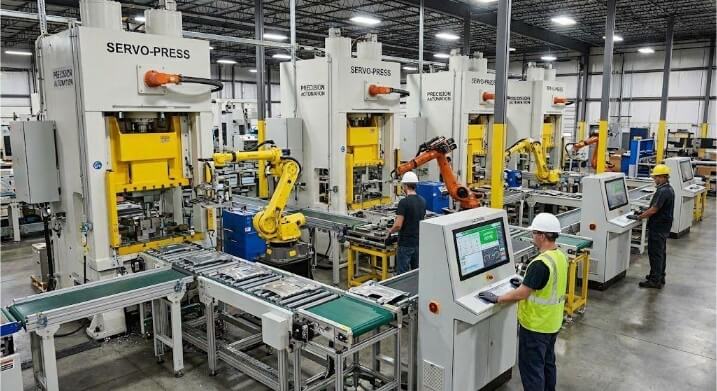Metal fabricators face mounting pressure to deliver precise, cost-effective parts at scale. Traditional manufacturing methods often fall short, leading to quality issues, missed deadlines, and budget overruns. Brass stamping emerges as a reliable solution, offering exceptional dimensional accuracy and superior surface finish while reducing production costs.
Want to explore how brass stamping can transform your manufacturing process? Let’s examine the techniques, applications, and cost benefits that make this method stand out.
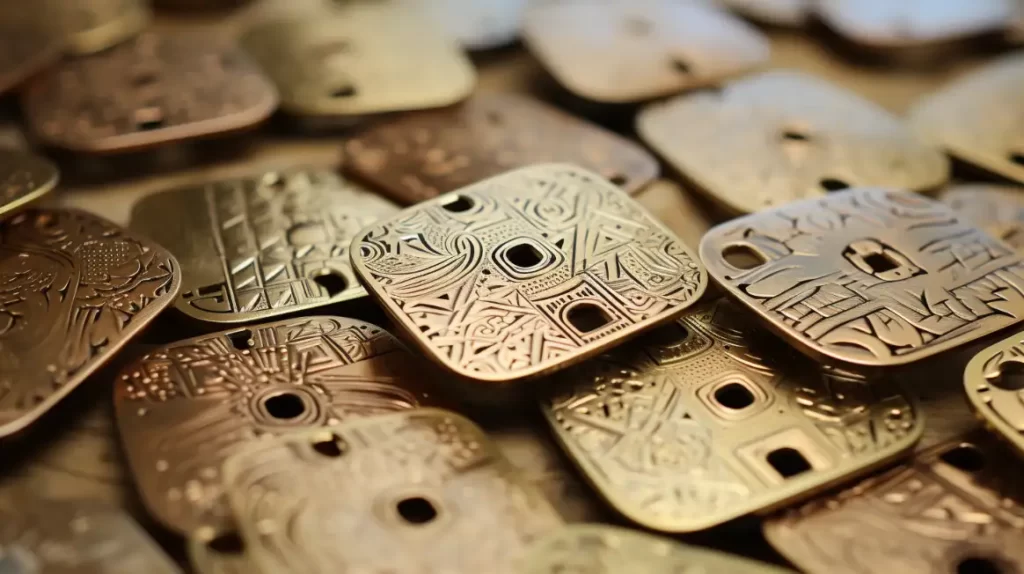
What is Brass Stamping?
Brass stamping is a metalworking process that uses specialized tools and dies to form brass sheets into specific shapes. The process applies controlled force to cut, bend, and shape the material into precise components. Modern stamping operations combine automated machinery with expert craftsmanship to achieve exceptional results.
How to Choose Brass Alloy for the Stamping Process
Selecting the right brass alloy for your stamping process is crucial for achieving optimal performance and quality in the final product. Here are key factors to consider:
Cost
Budget constraints play a significant role in material selection. Brass alloys vary in price based on their composition and properties.
Machinability
Highly machinable brass alloys simplify the stamping process, reducing operational complexities and costs. Alloys with good machinability enable faster production times and less tool wear, contributing to overall efficiency.
Tensile Strength
Tensile strength is a critical property that determines how well a brass alloy can withstand applied forces without breaking. For applications requiring durability under stress, selecting an alloy with adequate tensile strength is essential.
Application
When choosing a brass alloy, consider the stamped parts’ specific application. Different applications may require varying properties, such as conductivity or corrosion resistance.
Formability and Ductility
Alloys with high formability and ductility reduce the risk of defects during processing, such as cracking or tearing. Selecting alloys that offer these properties can lead to more efficient production and better-quality parts.
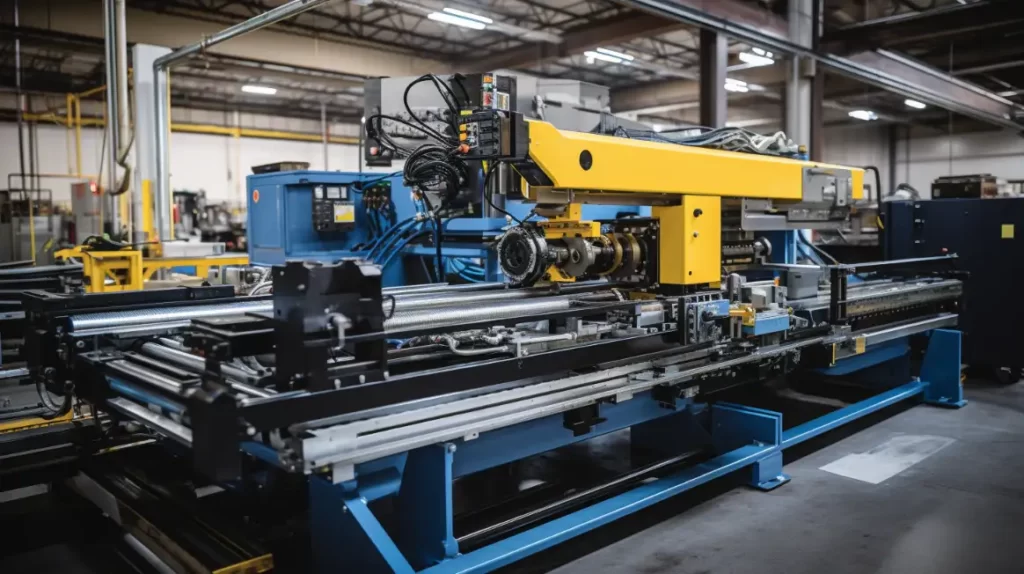
Benefits of Brass Stamping
Brass stamping delivers distinct advantages that make it a top choice for manufacturers seeking reliable, scalable solutions. This process combines efficiency with exceptional material properties to create superior components.
- Design Versatility: Brass is malleable and can be stamped into intricate designs.
- Durability: The stamped brass parts resist corrosion, allowing them to last longer under challenging conditions.
- Aesthetic Appeal: The golden color of brass gives finished pieces a luxurious and sophisticated appearance.
- Cost Effective: Brass is more plentiful and less expensive than other metals.
- Thermal Conductivity: This material’s high thermal and electrical conductivity makes it ideal for applications that require these properties.
Brass Stamping Process: Step-by-Step
Brass stamping is a dynamic process that combines precision and efficiency to create essential components. Let’s explore the step-by-step journey of transforming brass sheets into high-quality parts.
Step 1: Design and Tooling Preparation
The first step involves meticulous design and engineering. The desired part geometry is planned, considering factors like material properties and tooling requirements.
Step 2: Material Preparation
Brass sheets or coils are selected based on the part’s specific requirements. The sheets undergo preparation processes like cutting and leveling to achieve the appropriate dimensions for stamping.
Step 3: Feeding the Material
Prepared brass sheets or coils are fed into the stamping press. An automated feeding mechanism ensures precise positioning for accurate stamping.
Step 4: Stamping Operations
The stamping press applies high force and pressure, deforming the brass according to the contours of the dies. Various operations may take place during this stage, including:
- Blanking: Cutting out the desired shape from the brass sheet.
- Piercing: Creating holes or cutouts within the stamped part.
- Drawing: Shaping the brass into deeper forms, such as cylindrical or box shapes.
- Bending: Forming angles or curves in the component.
Step 5: Trimming and Finishing
After stamping, parts may require additional trimming to refine their shapes or add features like slots or holes.
Step 6: Quality Control
Operators inspect components for accuracy, ensuring they meet specified tolerances and quality standards before moving on to post-processing.
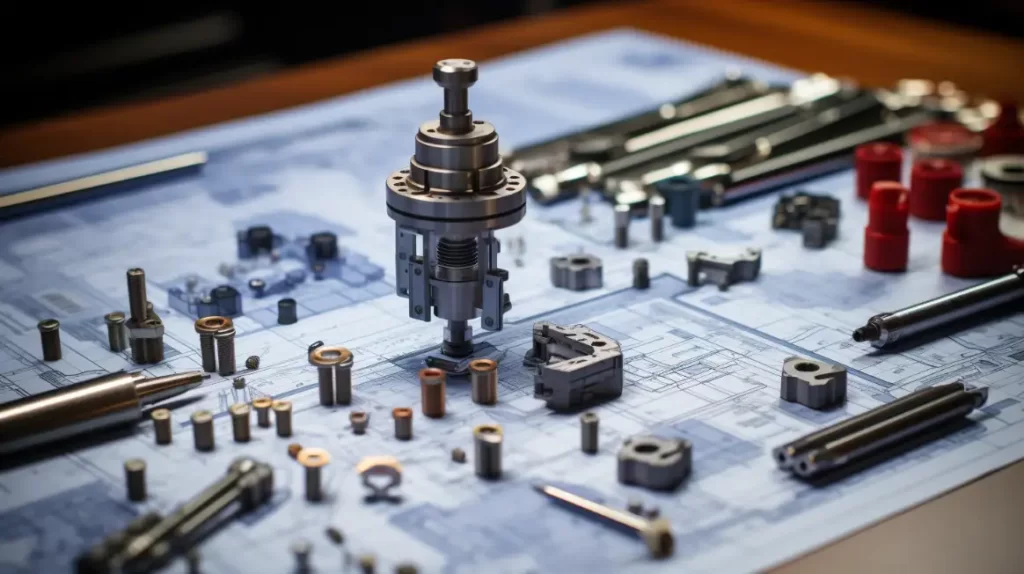
Types of Presses for Brass Stamping
There are three primary types of presses used in brass stamping, each offering unique advantages:
- Mechanical Presses: These presses utilize a motor and flywheel mechanism to generate high-speed production. They are ideal for high-volume runs and simple parts due to their speed and efficiency.
- Hydraulic Presses: Hydraulic presses use hydraulic fluid to generate force, providing greater control over pressure and stroke length. They are particularly suited for complex shapes and deep-drawing applications, although they operate at slower speeds compared to mechanical presses.
- Mechanical Servo Presses: Combining features of both mechanical and hydraulic presses, servo presses offer programmable control over speed, force, and stroke length. This flexibility makes them suitable for producing intricate components with high precision.
Brass Stamping Techniques
Brass stamping encompasses various techniques that enable manufacturers to produce intricate and high-quality components. Understanding these techniques can enhance efficiency and precision in production.
Deep Drawing vs. Shallow Drawing
Deep drawing and shallow drawing are two essential techniques in brass stamping, distinguished primarily by the depth of the drawn part.
- Deep Drawing: This technique involves forming a flat brass sheet into a deep, hollow shape where the depth exceeds the diameter of the part.
- Shallow Drawing: In contrast, shallow drawing produces parts with a depth that is less than or equal to their diameter.
Progressive Die Stamping
Progressive die stamping is a highly efficient technique that involves feeding a strip of brass through a series of dies, each performing a specific operation. This method allows for multiple processes—such as cutting, bending, and forming—to occur in a single run.
Blanking and Piercing in Brass Stamping
Blanking and piercing are fundamental operations in brass stamping that involve cutting processes but serve different purposes.
- Blanking: This operation removes a specific shape from a sheet of brass while retaining the cutout piece as the desired product.
- Piercing: Unlike blanking, piercing creates holes in the brass sheet, where the removed material (the hole) is considered scrap.
Factors Affecting Brass Stamping Quality
Manufacturing excellence demands close attention to key variables. Success in brass stamping relies on controlling multiple interrelated factors throughout the production process.
Material Properties and Thickness
Brass with high ductility can be shaped more easily without cracking or tearing. The thickness of the brass sheet determines the force required for stamping. Thin sheets need delicate pressure control, while thicker materials demand robust press capacity.
Tooling Design and Maintenance
Die design serves as the foundation of quality stamping. Sharp cutting edges create clean parts, while proper clearances prevent material damage.
Stamping Speed and Pressure
Process parameters make or break production quality. Press speed must match the flow properties of the brass being formed. Proper pressure settings prevent defects from either insufficient or excessive force.
Applications of Brass Stamping
Brass stamping’s versatility makes it valuable across diverse industries. Each sector leverages unique material properties for specific applications.
Automotive Industry: Enhancing Durability and Functionality
- Electrical connectors and terminals
- Transmission components
- Brake system parts
- Radiator fins and heat exchangers
Electronics: Precision Components and Contacts
- Circuit board components
- Electrical switches
- Battery contacts
- RF shielding components
Home Appliances: Aesthetic and Practical Parts
- Door hinges and handles
- Control panel components
- Electrical terminals
- Plumbing fixtures
Decorative Items: Craftsmanship and Design
- Cabinet hardware
- Light fixtures
- Door knockers
- Architectural trim
Jewelry and Art: Artistic Brass Stamping Applications
- Pendant blanks
- Decorative findings
- Custom jewelry components
- Ornamental pieces
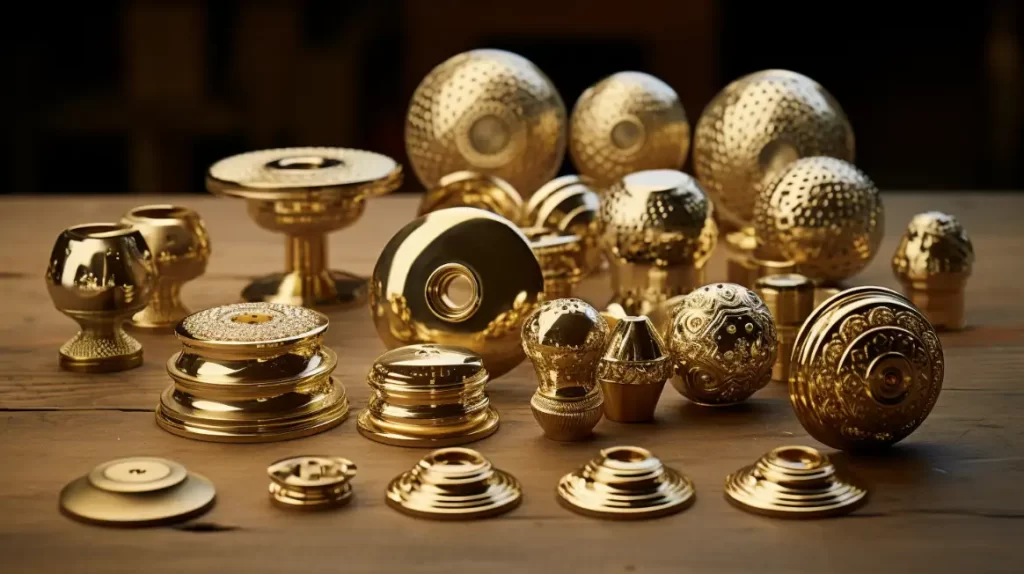
Troubleshooting Common Issues
While stamping is a systematic process, it’s challenging. Here are some common challenges:
- Wrinkling: Issues might arise from uneven pressure, misalignment, or brass that needs to be appropriately annealed. One can adjust the pressing force, realign the sheet, or re-anneal the brass as required to fix this.
- Tearing: Tearing is usually a sign that the brass has been overstretched. Checking the die design, changing press parameters, or using a more malleable sheet of brass can help.
- Surface defects: One can correct blemishes and imperfections by polishing or buffing after stamping. In severe cases, the item may need to be re-stamped.
Conclusion
Brass stamping is a versatile and efficient manufacturing process that relies on various techniques and factors to produce high-quality components. Understanding the intricacies of material properties, tooling design, and stamping parameters is essential for optimizing production.
If you’re looking to improve your brass stamping processes or need assistance in selecting the right materials for your projects, contact us today for expert guidance and tailored solutions!
Hey, I'm Kevin Lee

For the past 10 years, I’ve been immersed in various forms of sheet metal fabrication, sharing cool insights here from my experiences across diverse workshops.
Get in touch

Kevin Lee
I have over ten years of professional experience in sheet metal fabrication, specializing in laser cutting, bending, welding, and surface treatment techniques. As the Technical Director at Shengen, I am committed to solving complex manufacturing challenges and driving innovation and quality in each project.




